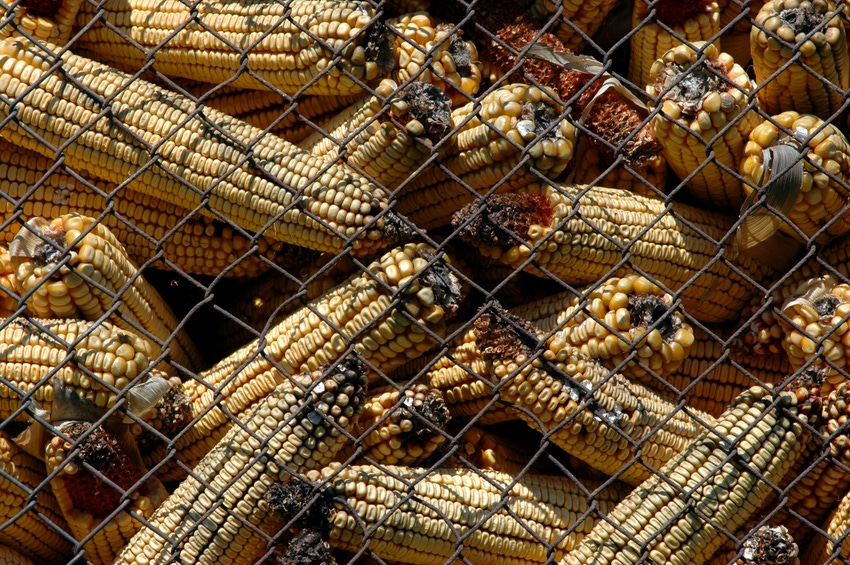Essential oils and aqueous plant extracts may inhibit fungal development and/or biosynthesis of aflatoxins, but more research is needed.
December 26, 2018

Aflatoxins are secondary metabolites produced by fungi of the genus Aspergillus, which occur naturally in cereals like corn, beans and rice.
Aflatoxin B1 (AFB1) is the main aflatoxin produced by the fungi and has the highest toxicity, mainly targeting the liver, while also exhibits teratogenic, mutagenic and carcinogenic effects in humans and several animal models, according to a review article recently published in The Open Food Science Journal.
Because the aflatoxins are heat-stable compounds, management to prevent food and feed contamination is essential during the production, mainly in pre- and post-harvest steps, said article lead author Dr. Bárbara Ponzilacqua Silva with the University of São Paulo School of Animal Science & Food Engineering in Brazil.
However, the development of new, reliable techniques to eliminate aflatoxin from contaminated foodstuffs is a very important task for the food industry.
In this context, Silva said considerable experimental research has indicated that essential oils and aqueous plant extracts inhibit the fungal development and/or the biosynthesis of aflatoxins, hence demonstrating a potential for their use in food products.
The review article summarizes the experimental studies conducted with essential oils and aqueous plant extracts. The authors discuss the prospects for using these compounds in food products to prevent Aspergillus growth or aflatoxin production, particularly in stored cereals and their manufactured products.
The authors suggest that, as a first step, the procedures for preparation of plant extracts and/or essential oils need standardization. Additionally, further studies are necessary to identify the main active compounds of plant extracts and understand their mechanisms of action, as well to determine the safety levels for their use by the food industry, Silva said.
Some practical aspects of using essential oils and aqueous plant extracts in food products also need to be investigated, especially their potential effects on sensory characteristics of foods, and their shelf life for the maintenance of antifungal properties under different environmental conditions, Silva added.
The full open-access article can be accessed at this link.
You May Also Like
.png?width=300&auto=webp&quality=80&disable=upscale)
.png?width=300&auto=webp&quality=80&disable=upscale)

